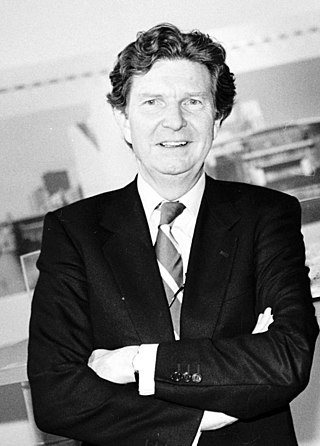
The International Council on Monuments and Sites is a professional association that works for the conservation and protection of cultural heritage places around the world. Now headquartered in Charenton-le-Pont, France, ICOMOS was founded in 1965 in Warsaw as a result of the Venice Charter of 1964, and offers advice to UNESCO on World Heritage Sites.

Conservation and restoration of immovable cultural property describes the process through which the material, historical, and design integrity of any immovable cultural property are prolonged through carefully planned interventions. The individual engaged in this pursuit is known as an architectural conservator-restorer. Decisions of when and how to engage in an intervention are critical to the ultimate conservation-restoration of cultural heritage. Ultimately, the decision is value based: a combination of artistic, contextual, and informational values is normally considered. In some cases, a decision to not intervene may be the most appropriate choice.

Riverview High School is a four-year public high school in Sarasota, Florida, United States. Riverview educates students from ninth grade to twelfth grade. The school has 2,654 students and 129 teachers. The school's mascot is the ram. As of the 2012–2013 school year, it is the largest school in the county.
The Venice Charter for the Conservation and Restoration of Monuments and Sites is a set of guidelines, drawn up in 1964 by a group of conservation professionals in Venice, that provides an international framework for the conservation and restoration of historic buildings. However, the document is now seen as outdated, representing Modernist views opposed to reconstruction. Reconstruction is now cautiously accepted by UNESCO in exceptional circumstances if it seeks to reflect a pattern of use or cultural practice that sustains cultural value, and is based on complete documentation without reliance on conjecture. The change in attitude can be marked by the reconstruction in 2015 of the Sufi mausoleums at the Timbuktu World Heritage Site in Mali after their destruction in 2012.

Lincoln Road Mall is a pedestrian road running east–west parallel between 16th Street and 17th Street in Miami Beach, Florida, United States. Once completely open to vehicular traffic, it now hosts a pedestrian mall replete with shops, restaurants, galleries, and other businesses between Washington Avenue with a traffic accessible street extending east to the Atlantic Ocean and west to Alton Road with a traffic accessible street extending to Biscayne Bay.

The White City is a collection of over 4,000 buildings in Tel Aviv from the 1930s built in a unique form of the International Style, commonly known as Bauhaus, by Jewish architects who fled to the British Mandate of Palestine from Germany after the rise to power of the Nazis. Tel Aviv has the largest number of buildings in the Bauhaus/International Style of any city in the world. Preservation, documentation, and exhibitions have brought attention to Tel Aviv's collection of 1930s architecture. In 2003, the United Nations Educational, Scientific and Cultural Organization (UNESCO) proclaimed Tel Aviv's White City a World Cultural Heritage site, as "an outstanding example of new town planning and architecture in the early 20th century." The citation recognized the unique adaptation of modern international architectural trends to the cultural, climatic, and local traditions of the city. Bauhaus Center Tel Aviv organizes regular architectural tours of the city.
Australia ICOMOS is a peak cultural heritage conservation body in Australia. It is a branch of the United Nations-sponsored International Council on Monuments and Sites (ICOMOS), a non-government professional organisation promoting expertise in the conservation of place-based cultural heritage. Its secretariat is based at the Cultural Heritage Centre for Asia and the Pacific at Deakin University.

Knoll, is an American company that manufactures office systems, seating, storage systems, tables, desks, textiles, as well as accessories for the home, office, and higher education. The company is the licensed manufacturer of furniture designed by notable architects and designers such as David Adjaye, Harry Bertoia, Ludwig Mies van der Rohe, Florence Knoll, Frank Gehry, Charles Gwathmey, Maya Lin, Marc Newson, Ini Archibong, Eero Saarinen, and Lella and Massimo Vignelli, under the company's KnollStudio division. Over 40 Knoll designs can be found in the permanent design collection of the Museum of Modern Art in New York City.

St. Peter's Seminary is a former Roman Catholic seminary near Cardross, Argyll and Bute, Scotland. Designed by the firm of Gillespie, Kidd & Coia, it has been described by the international architecture conservation organisation DOCOMOMO as a modern "building of world significance". It is one of only 42 post-war buildings in Scotland to be listed at Category A, the highest level of protection for a building of "special architectural or historic interest". It has been abandoned since 1987, and is currently in a ruinous state. In July 2020, the site was gifted to the Kilmahew Education Trust Ltd who plan to reinstate the educational elements of the Seminary Complex after a process of conservation and restoration. The wider Kilmahew Estate is to be brought back to its former glory with new landscaping and features but is currently closed to the public due to safety concerns.
The estate Zonnestraal is a former sanatorium in Hilversum, the Netherlands. The building was designed by architects Jan Duiker Bernard Bijvoet and Jan Gerko Wiebenga, and is an example of the Nieuwe Bouwen. In 1995, the estate was submitted to UNESCO's list of World Heritage Sites, but it was ultimately not listed.

Andrzej Stanisław Tomaszewski was a Polish historian of art and culture, architect, urban planner and archaeologist, investigator of medieval architecture and art in Poland and abroad. He was considered one of the most important and influential international scientists in the preservation and conservation of cultural heritage.

Hubert-Jan Henket is a Dutch architect. He is a specialist in the relations between old and new buildings, the redesign of buildings, renovation and restoration. He is the founder of DOCOMOMO international.
Christine Phillips is an Australian architect, academic, writer and broadcaster based in Melbourne, Australia.
Geoffrey Paulson Townsend was an English architect and developer, noted for his company, Span Developments, and long association with architect, Eric Lyons.
Raymond Martin Marie Ghislain, Baron Lemaire was an art historian and an architectural historian, a leading expert in conservation and professor at the Catholic University of Leuven and later at the KU Leuven and the Université catholique de Louvain in Louvain-la-Neuve.
J. W. Chorley Elementary School was a modernist architecture school building in Middletown, New York designed by American architect Paul Rudolph while he was serving as Dean of the Yale School of Architecture. The school was torn down in November 2012.

Abdolrasool Vatandoust Haghighi was born in Isfahan, Iran, on July 17, 1947.

Carrières Centrales is a series of modernist housing developments in Casablanca, Morocco designed in the 1950s by architects Georges Candillis, Shadrach Woods, Alexis Josic. The development aimed to create utopian "habitats" that would provide alternatives to slum life for working class residents of the city. Carriere Centrale has been noted as a prominent example of modernism within the Maghreb.
Professor Hannah Lewi is an architectural historian and educator based in the Melbourne School of Design at the University of Melbourne.
Peter Richard Norman Johnson (1923–2003) served with the Royal Australian Air Force during World War II and was a distinguished architect in his native Australia.











